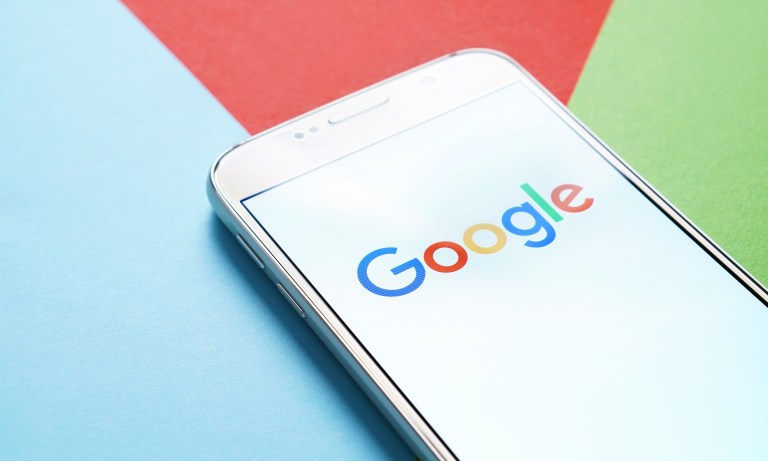
When Google rolled out the latest and greatest upgrade to its Shopping List tool in April — and changed the tool’s app-based home from Google Keep (its note taking app) to Google Express (its shopping app) — it endured its share of disgruntled grumblings from users.
Fans of the older placement complained that it had been both easier to access and more logically placed in the location where users store their to-do lists and other planning-related ideas — as opposed to the slight convenience of buying items off the list more directly with Express (the official explanation for the change). The grumbling has gone on apace since that April change.
As of last week, though, an undaunted Google has carried on with the overhaul of its shopping list — with a new, clear-looking, bright white interface, illustrations of products appended to list items, and a pop-up-laden environment offering new users an ongoing buffet of tips and tricks for getting the most out of the system. Users can update their shopping list on mobile or desktop using Google Express Web interface. They can also call upon the Google Assistant (on the Google Home Smart speaker or on the Android phone) to add items to their list.
It won’t be enough, according to one Android Police reviewer, to calm anyone still enraged that the shopping list left its old app-based home behind, nor will it persuade users who, first and foremost, demand a grocery list app that they can access online or offline. But for consumers who don’t mind the web-based system (particularly users who already regularly interact with the Google Assistant Voice ecosystem), the reviewer noted, the new and improved shopping list is a big improvement and a tempting tool.
It seems Google has been busy of late, tweaking and expanding its commerce ecosystem as it touches on its concurrently developing voice system. The goal — recent reports make clear — is to push Google as a single-point commerce tool, whether one is looking at a screen or talking to an AI. Google’s big push is toward physical and local merchants — and being the digital entity that bridges the physical, eCommerce gap.
To that end, it has launched a new feature called “See What’s In Store,” which will give local merchants a crack at offering up an inventory list for free as part of their Knowledge Panels. The Knowledge Panels are the boxes that appear to the right of search results for a specific business. Those in-store listings will also pop-up on the Google Maps listing for the business.
That new inventory data will appear as part of a series of upgrades Google has made to information available, including video campaigns businesses create for YouTube. As location extensions, businesses can now include full inventory listings for their store locations, as well as stock and pricing data. Both local catalog ads and search-based inventory listings come care of new partnerships Google has formed with POS and inventory data firms like Pointy, Cayan, LINK and yReceipts — which will provide merchant data directly to Google.
Google Shopping’s Director of Product Management Surojit Chatterjee wrote in a blog post, “Driven by rapid changes in technology and mobile, consumer expectations continue to rise at an unrelenting pace. There are brand new ways for people to find and engage with businesses, and it’s becoming critical for marketers to remove friction at every step of the consumer journey.”
“Almost 80 percent of shoppers will go in-store when they have an item they want immediately,” Chatterjee continued.
Google’s aim is to help connect businesses to that 80 percent of customers — and driving more sales both online and offline. In effect, Chatterjee added, that is already being noted by firms leveraging the product.
“Boulanger is one of the largest electronics and appliances retailers in France,” he wrote in the post, noting that the brand decided to use catalog ads in Spring 2018 to boost a special promotional event they were planning.
Chatterjee wrote, “Boulanger showcased a cheerful lifestyle image, a message welcoming the season and products carefully curated for local in-store promotion. With help from both click-based and impression-based store visits (launched in March), the campaign drove over 20K visits to its stores, delivering a return of 42 times its investment on ad spend.”
Google also announced a competitive new feature that will allow merchants to check pricing for similar items sold by other retailers, and immediately up its advertising presence if it has a better deal to promote.
Most notably for voice AI ecosystem, Google has pushed an update on Shopping Actions, the skill that allows consumers to purchase items directly from search, Assistant or voice queries in Google apps. According to Chatterjee, thousands of retailers have requested to join Shopping Actions since its launch and, as of today (June 13), 70 retailers are live on the program today.
He noted, “Early testing indicates that participating retailers on average see an increase in total clicks and conversions at a lower overall cost-per-click and conversion, compared to running Shopping ads alone.”
There was one big piece of news Google didn’t offer up today, though many people briefly believed they had. After what was apparently a mistaken tweet sometime yesterday, widespread reports began to emerge that Google Assistant’s could now perform three actions.